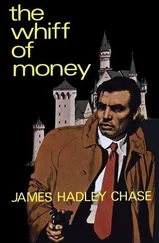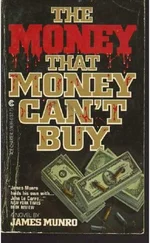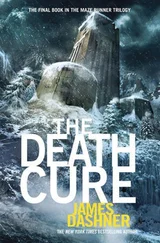I told Morell that we would end our SEC referrals, and I offered to provide him with the technical specifications needed to assure the agency that the information we used was open source and involved no individuals. He thanked me, and with that the meeting was over. Only later did I realize that MARKINT, at least as far as the CIA was concerned, had just become a dead letter.
Near the beginning of Project Prophesy, I remarked to Randy Tauss that the team was doing extraordinary work and a counterterrorist system that could prevent spectacular attacks seemed within reach. Randy, the thirty-three-year veteran, smiled and said, “Jim, let me tell you how things work around here. We’ll do a great job, and this thing will work like a charm. Then it will go nowhere and be put on a shelf. One day there will be a spectacular attack, and it will be apparent there was advance insider trading. The agency will pull our work from the shelf, dust it off, and say, ‘See, we have the solution right here. We have a system that can detect this next time.’ That system will get millions in funding and be built the way we wanted. But it will be too late to save lives in the next attack.”
Sadly, Randy’s words proved prescient. Sure enough, MARKINT was put on the shelf. But we still felt that the signal engine had a valuable role to play, even without the CIA as a home. If the civilian agencies had scant interest, we still had one friend at court—the Department of Defense. The Pentagon had the greatest resources, the fewest operational constraints, and the most forward-leaning mind-set. The ranks of senior military officers are filled with engineers, Ph.D.’s, and many more experts with graduate-level degrees in history, languages, and strategy. After all, this is the branch of government that can claim credit for the Defense Advance Research Projects Agency (DARPA), which invented the systems that led to the Internet and World Wide Web.
As it happened, our contacts with the Pentagon developed in 2007 and 2008 at exactly the time the civilian intelligence community was backing away from our efforts. But to grow this relationship, MARKINT itself had to evolve. Chris Ray and I were aware, from the early stages, that MARKINT was not just a counterterrorist tool. If it could detect terrorist footprints in capital markets, why couldn’t it also be deployed to monitor the marketplace actions of dictators, strategic rivals, and other state actors? All we needed to do was calibrate the signal engine to focus on specially tailored target sets of securities.
With this broader mission in mind, Chris and I began looking for other phenomena besides insider stock trading. One that we identified was Venezuela’s conversion of its dollar reserves into gold; it presaged Hugo Chávez’s war on the dollar and his later demand that Venezuela’s gold be repatriated from vaults in London.
We got a chance to show our system to a military audience in December 2007, when we presented the MARKINT signal engine to the U.S. Strategic Command (STRATCOM) in Omaha, Nebraska. Participants at that meeting included civilian scientists in addition to uniformed military. We demonstrated how the system could be used for early warning of attacks on the U.S. dollar and on efforts to crash U.S. markets.
Suddenly the technology was seen in a new light. We weren’t alone, of course, but we were seeing the future of warfare: not wars with kinetic weapons, but wars fought on an unrestricted battlefield that included chemical and biological weapons, cyberweapons, and in our case, financial weapons.
It was becoming apparent to the Pentagon that U.S. dominance in conventional air, land, and sea battle had caused our rivals to seek new ways to confront us. Future wars would be fought in an expanded battlespace that included stocks, bonds, currencies, commodities, and derivatives. Our signal engine was the perfect early warning device.
Remember the truism No one trades alone . For every buyer, there is a seller. If one side of a trade is a threat to national security, it leaves a trace that the enemy did not intend. The enemy trader is like a fish swimming in the water; it leaves ripples. Even if the fish is invisible, the ripples can be seen, and the presence of the fish inferred. The forward-thinkers at that meeting in Omaha recognized that our signal engine could detect the ripples, that we had devised the perfect early warning device.
MARKINT would have a future after all. It would be not the narrow counterterrorist tool we had set out to create, but rather a broad-based system, a sort of radar for the marketplace that was designed to detect incoming financial threats. MARKINT had grown up. Our team and technology had now entered the new, larger arena of financial war.
CHAPTER 2
THE WAR GOD’S FACE
If it’s… possible to start a war in a computer room or a stock exchange that will send an enemy country to its doom, then is there non-battlespace anywhere?… If [a] young lad setting out with his orders should ask today, “Where is the battlefield?” the answer would be, “Everywhere.”
Colonel Qiao Liang and Colonel Wang Xiangsui People’s Liberation Army, China 1999
Now our enemies are also seeking the ability to sabotage our… financial institutions…. We cannot look back years from now and wonder why we did nothing in the face of real threats to our security and our economy.
President Barack Obama February 12, 2013
One purpose of war is to degrade the enemy’s will and economic capacity. Surprising as it may sound, wealth destruction through a market attack can be more effective than sinking enemy ships, when it comes to disabling an opponent. Financial war is the future of warfare, and no one works harder to see the future than senior Defense Department official Andy Marshall.
Seated at a table in a secure Pentagon conference room on a rainy fall morning in September 2012, Marshall moved forward in his chair. Around the table were three prominent investment managers, three SEC officials, and several think-tank experts, along with members of Marshall’s staff. Our carefully selected group was there to discuss financial war.
“That’s interesting,” Marshall said. What prompted his comment, after an hour of complete silence on his part, was our discussion of China’s stockpiling of gold and its possible use as a financial weapon in undermining the dollar’s exchange value.
Andy Marshall is called “Mr. Marshall” even by associates as a sign of respect, and at ninety-two years of age, he has earned the deference. His official title is Director of the Office of Net Assessment in the Office of the Secretary of Defense. Unofficially he is the Pentagon’s chief futurist, the man responsible for looking over the horizon and assessing threats to U.S. national security long before others even know they exist. Marshall has held this position since 1973, through eight presidential administrations.
His involvement in national security strategy goes back even further, to 1949, when he joined the RAND Corporation, the original think tank. The list of his former associates and protégés includes Herman Kahn, James Schlesinger, Don Rumsfeld, Dick Cheney, Paul Wolfowitz, and other giants of national security policy over eight decades. Only the late Paul Nitze is comparable to Marshall in terms of the depth and breadth of his influence on strategic affairs in the period since World War II.
If Marshall is less known to the general public than the figures to whom he is compared, that is quite by design. He almost never gives interviews or speeches; nor does he appear in public, and his writings are mostly classified. In a meeting, he has a sphinxlike demeanor, listening for long periods in complete silence, occasionally uttering a few words that show he has absorbed everything and is now thinking three moves ahead.
Читать дальше











